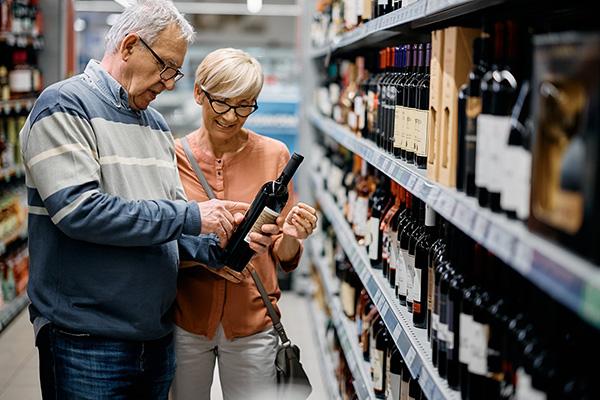
Tomorrow, on 8 December 2023, new rules on labelling of ingredients and nutritional values on wine and aromatised wine products will enter into application in the European Union. The additional information provided on the labels will enable consumers to make more informed choices.
The new rules will apply to all wines and wine products obtained from the harvest 2024 while all wines produced before 8 December 2023 will still be exempted from the new rules until stocks are exhausted.
The operators will have the choice to indicate the list of ingredients and the nutrition declaration either on the physical label of the wine or through a dedicated electronic means, such as a QR code. Allergenic substances will continue to be presented on the physical label as it will be the case now for the energy value. The information provided online should be as clearly visible and accessible to consumers as the information provided on a physical label. The word ‘ingredients’ should be easily identified by consumers in the label and not confused with other electronic means containing marketing messages. While rules have been set in 2021 and more detailed rules issued months ago, the Commission recently published a set of questions and answers to guide operators and Member States in the application of the new rules. National authorities will be in charge of enforcing the new rules.
This will cover the existing gap between wine and all other food products which for many years have been required to provide such information. Wine was exempted until now, as other alcoholic beverages do, from the obligation to provide the information on the list of ingredients and the nutrition declaration.
In the new wine labels, consumers will be able to find at least the following information on all wines sold in the EU:
- the designation of the category of grapevine product
- the term ‘protected designation of origin’ (PDO) or ‘protected geographical indication’ (PGI), and its name, for wines registered as geographical indications
- the actual alcoholic strength by volume
- the indication of provenance
- the name of the bottler or the name of the producer or vendor
- the net content
- the sugar content in case of sparkling wine categories
- the nutrition declaration
- the list of ingredients
- the substances causing allergies or intolerances
- the minimum date of durability for grapevine products which have undergone a de-alcoholisation treatment.
This comprehensive information will guarantee consumers maximum transparency when choosing and purchasing wine.
Background
In the framework of the last reform of the Common Agricultural Policy (CAP) adopted in December 2021, the European Parliament and the Council introduced new labelling rules for wine sector and the aromatised wine products. After a transitional period of 2 years set by the co-legislators, operators had time to prepare to the new rules. The Commission, upon request by the co-legislators and following a thorough consultation with stakeholders and Member States, used of this transitory period to adopt in May 2023 supplementing rules in relation to the labelling of the list of ingredients. To further clarify many questions raised by different stakeholders and Member States as regards the implementation of the new labelling rules were replied along 2023, the year culminated with the publication of a Commission Notice containing a compilation of questions and answers on 24 November 2023. This paved the way for a smooth and harmonised application of the new labelling rules in the interest of consumers and operators, in a balanced way.
Details
- Publication date
- 7 December 2023
- Author
- Directorate-General for Agriculture and Rural Development
- Location
- Brussels
